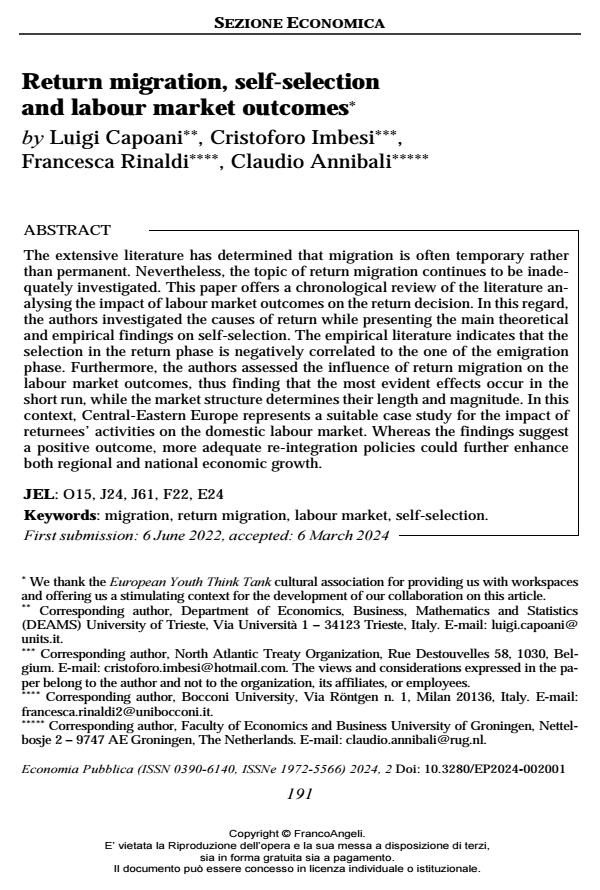Return migration, self-selection and labour market outcomes
Titolo Rivista ECONOMIA PUBBLICA
Autori/Curatori Luigi Capoani, Cristoforo Imbesi, Francesca Rinaldi, Claudio Annibali
Anno di pubblicazione 2024 Fascicolo 2024/2
Lingua Inglese Numero pagine 38 P. 191-228 Dimensione file 206 KB
DOI 10.3280/EP2024-002001
Il DOI è il codice a barre della proprietà intellettuale: per saperne di più
clicca qui
Qui sotto puoi vedere in anteprima la prima pagina di questo articolo.
Se questo articolo ti interessa, lo puoi acquistare (e scaricare in formato pdf) seguendo le facili indicazioni per acquistare il download credit. Acquista Download Credits per scaricare questo Articolo in formato PDF

FrancoAngeli è membro della Publishers International Linking Association, Inc (PILA)associazione indipendente e non profit per facilitare (attraverso i servizi tecnologici implementati da CrossRef.org) l’accesso degli studiosi ai contenuti digitali nelle pubblicazioni professionali e scientifiche
The extensive literature has determined that migration is often temporary rather than permanent. Nevertheless, the topic of return migration continues to be inadequately investigated. This paper offers a chronological review of the literature analysing the impact of labour market outcomes on the return decision. In this regard, the authors investigated the causes of return while presenting the main theoretical and empirical findings on self-selection. The empirical literature indi-cates that the selection in the return phase is negatively correlated to the one of the emigration phase. Furthermore, the authors assessed the influence of return migration on the labour market outcomes, thus finding that the most evident ef-fects occur in the short run, while the market structure determines their length and magnitude. In this context, Central-Eastern Europe represents a suitable case study for the impact of returnees’ activities on the domestic labour market. Whereas the findings suggest a positive outcome, more adequate re-integration policies could further enhance both regional and national economic growth.
Parole chiave:migration, return migration, labour market, self-selection.
Jel codes:O15, J24, J61, F22, E24
Luigi Capoani, Cristoforo Imbesi, Francesca Rinaldi, Claudio Annibali, Return migration, self-selection and labour market outcomes in "ECONOMIA PUBBLICA " 2/2024, pp 191-228, DOI: 10.3280/EP2024-002001